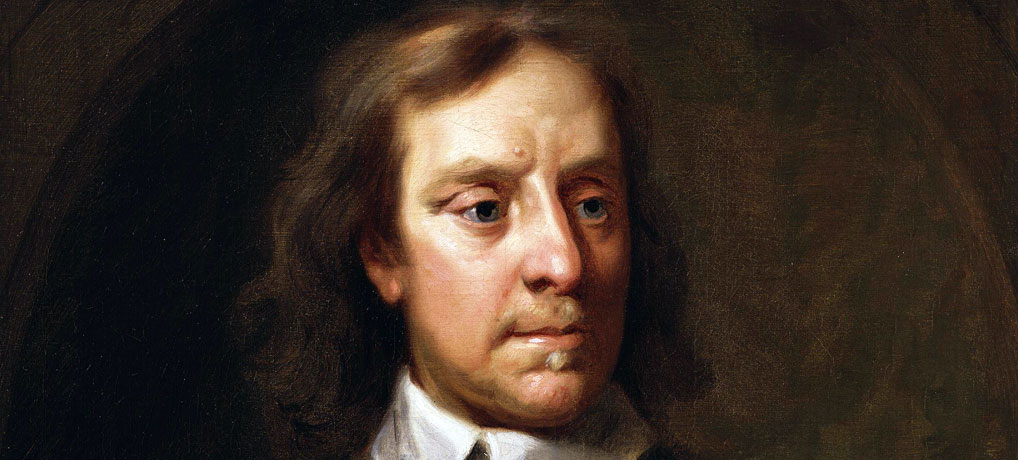Oliver Cromwell (born 25 April 1599; Lord Protector 16 December 1653 till death 3 September 1658)

After the beheading of King Charles the Parliamentarians lost the central figure of hatred and so turned to bickering among themselves. Cromwell continued in control of the army which he took to Ireland to slaughter many thousands of Catholics (to this day Cromwell is a four letter word in Ireland), then he turned to Scotland and performed another slaughter. The word genocide had not been coined then, but there are those who believe it appropriate to these situations.
Meanwhile the parliamentarians continued to squabble until Cromwell drove them out and effectively had himself proclaimed sovereign, with his laurel wreathed head on the coinage. Although he called himself “Lord Protector” he required he be addressed as “Highness.”
Parliament in July 1649 ordered an inventory of all royal possessions and properties with the intention of selling them. There was some precedent for this, Thomas Cromwell under Henry VIII had done the same with the Catholic church before their properties were sold off, known now as the “Dissolution of the Monasteries.”
Of the thousands of pages comprising the inventory, 76 refer to Hampton Court. The sale proceeded for the next three years. Many of the most valuable properties were not sold but were listed as remaining at Hampton Court or in the keeping of Cromwell (using various titles) who had set himself up there. The surrounding lands were listed as: House Park 363 acres; Hampton Court Course 144 acres; Hare-Warren 380 acres; Middle Park 370 acres; Bushey Park 350 acres, together with 300 deer.
The royal palaces and furnishings, Hampton Court included, were exempt from any sale. But in November 1652 Parliament switched course. Initially it was decided to sell Hampton Court, then this was rescinded, then back and forth over the decision, then it was decided to sell the land but not the palace where Cromwell had taken residence. In December 1653, the Manor and Honour (all peripheral property and dues) were sold to John Phelps of London for 750 pounds sterling. Bushey Park was sold to Edmund Blackwell for a little less than seven thousand pounds, and the Middle Park was sold to Colonel Norton for three thousand pounds.
And then they changed their minds again. Cromwell was designated “Lord Protector” and although some of these lands had been sold on, the whole was re-acquired for the State in 1654. Cromwell and his wife (satirically called the Lady Protectress) set up in Hampton Court and there the affairs of State were conducted, and ambassadors received. And there too in 1657 his third daughter, Mary, was married in the chapel to Thomas, Viscount Falconbridge.
The various members of Cromwell’s family, children and their spouses, grandchildren, were accommodated at Hampton Court which became the family home. They were all given aristocratic titles of Lord and Lady.
Cromwell died in 1658 of an unknown fever. His son Richard was designated his ruling successor but was not up to the job, and faced Parliament with his father’s debts of ₤29,000, causing them to decide to sell Hampton Court and all its contents. But once again, they changed their minds, and nothing was sold. Parliament voted to pass them to General Monk, who rejected the idea of permanent ownership, and was given ₤20,000 in lieu and the right to enjoy Hampton Court for his lifetime. Monk knew what was about to happen in England. The Stewart monarchy was restored, and he continued in Hampton Court with the privileges Parliament had conferred, but ratified by the next sovereign.
